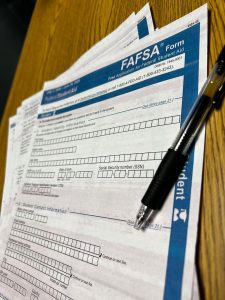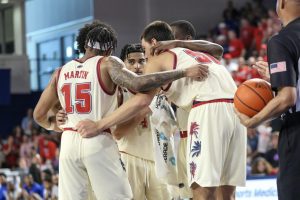Since March 2009, 46 FAU students have collectively saved over $6,000 and 336 gallons of gasoline. They’ve pledged to drive less aggressively, download MP3s instead of buying CDs, and use mugs instead of disposable cups. They’re not trying to save money — they’re trying to become America’s greenest campus and win the school $5,000.
America’s Greenest Campus is a contest hosted by Climate Culture, a New York-based company that has constructed a social networking Web site and virtual carbon calculator. Alex Van Mecl, founder of Mission Green’s Student Association, explains that they’re using their developments to host a competition that “judges how well an institution is becoming green.”
Essentially, the competition judges a college’s collective lessening of their environmental impact, or carbon footprint, through questions. When users register at www.climateculture.com, the social networking site, they’re asked questions pertaining to their daily lives, such as their household size, income and travel methods. These questions are fed into the carbon footprint calculator so that they can make various environmental improvement pledges on the Web site.
Through the pledges, Climate Culture is able to gauge a user’s lessening of their carbon footprint, which boosts the school’s green rating and chances of winning. In August, FAU ranked 24 out of 450 schools competing but continues to rely on student participation to win.
Climate Culture used their social networking skills to inform colleges about the event.
“FAU was contacted by individuals at [Climate Culture], introducing us to the competition,” says Campus Sustainability Committee co-chair Shannon Clounts.
Once informed, Mission Green and the Campus Sustainability Committee began to draw students into participation.
“We set up a table in the Breezeway to get students involved, and Mission Green utilized tools such as Facebook,” says Clounts.
In addition, Mission Green is holding an open call dance competition in the fall, along with a week-long celebration of Earth Day. With all of the events grabbing students’ attention, the organizations hope to improve the school’s green report card, a ratings system based upon institution sustainability, with “A” being the best score possible.
Last year, FAU received a “C-” on its green report card; however, Van Mecl sees the “C-” as an accomplishment.
“[To] have a ‘C-‘ after only two or three years of having Mission Green is pretty successful,” he says.
Still, there’s room for improvement. With the introduction of the America’s Greenest Campus contest this year, FAU now has the ability to rally up thousands of students into involvement, rather than just a few administrators and club presidents. Although the competition ends Oct. 1, Van Mecl feels that any student participation in both America’s Greenest Campus and future campus events will help out the school’s grade.
The main tone of all the events and outreach is awareness.
“The most important aspect is being aware of our actions and decisions and making a conscious effort to be green,” says Clounts.
Luckily, if FAU succeeds at raising awareness, they’ll receive a $5,000 prize that, according to Clounts, “would go directly to support our sustainability efforts at FAU.”
Those efforts would include constructing more eco-friendly buildings on campus, planting trees and getting students involved in campus sustainability. With all the work they’re doing, Mission Green’s Student Association and the Campus Sustainability Committee are hoping to improve the Green Report Card and become America’s Greenest Campus.
Though 450 schools are also vying for the title, the competition and its competitors share the same goal: “To really raise awareness, to reduce carbon emissions worldwide and [to] avert the potential oncoming climate disaster if we don’t curb our addiction [to] fossil fuels,” says Climate Culture intern Ryan Lichtenstein.
In addition to the green pledges offered on Climate Culture’s Web site, Clounts adds her own advice.
“Your choices affect your footprint — from daily routines such as turning the water off while brushing your teeth and turning the lights off when not needed, to purchasing decisions such as looking at content value of products to see if they’re made from recycled materials,” Clounts says.
Though the green organizations would love the $5,000 stimulus, they’re not in the green business for the money.
“At the end of the day, people need to realize that we’re in it for the same purpose. The general consensus is that it’s not a competition: It’s a mission statement we all want to accomplish. We have this intent to become environmentally conscious, not with the school itself, but with the community at the school,” says Van Mecl.
To learn more about FAU’s green report card, go to www.greenreportcard.org.











